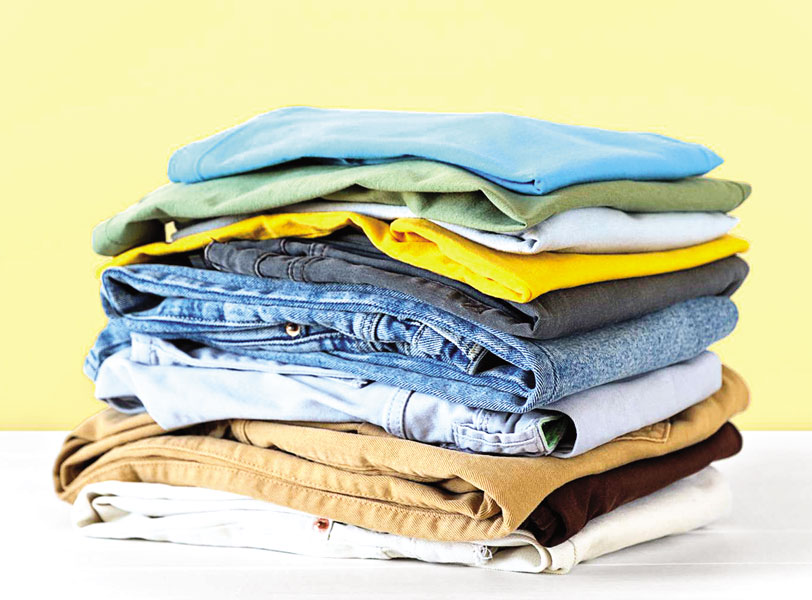 Once a new concept, thrift shopping has become a go-to choice for many fashion-forward individuals who aspire to make their statement at a fraction of the cost. Flea shops at New Market, Nurjahan, and Gausia are firsthand destinations for many of these hunters of affordable treasures, while others opt for online shops that resell the items from these places for ease.
Once a new concept, thrift shopping has become a go-to choice for many fashion-forward individuals who aspire to make their statement at a fraction of the cost. Flea shops at New Market, Nurjahan, and Gausia are firsthand destinations for many of these hunters of affordable treasures, while others opt for online shops that resell the items from these places for ease.
However, with the rise of more and more online platforms reselling items from these markets, thrifting has taken on new dimensions, stirring talks about whether it's all about sustainability these days or just a quick way to profit.
Thrift stores, as we know them, first gained prominence during the Great Depression of 1929, established to provide the poor with access to affordable clothing during severe economic hardship. Over time, the focus expanded as sustainability and waste reduction became central to the thrifting ethos. More and more people turned away from fast fashion, gaining knowledge about labour exploitation, embracing thrift shopping, and making it an integral part of their lives.
The benefits of thrift shopping are clear. Yes, it does reduce waste. By purchasing second-hand items, consumers can give a new life to the pre-loved garments, contributing to the reduction of the staggering amounts of textile waste that end up in landfills each year. A study by Green Study, highlighted in Discovery Magazine, reveals that purchasing a second-hand garment can save up to 21.4 pounds of carbon dioxide emissions. In addition, a thrifted handbag can prevent up to 267 pounds of CO2 from being released compared to buying a new one.
"Think about water," Samia Ahsan explained with enthusiasm. A random piece of shirt or top needs hundreds of gallons of water before being ready as a marketable product. The short life of these products will lead to more production, meaning more water waste. That's where I find my inspiration to thrift."
This second-year student from Ahsanullah University of Science and Technology claims to be a proud sustainable thinker in her lifestyle choice. So is her friend Araf Mahmood, an Architecture student and a freelance creative designer. He is cautious about using his clothes properly and scrapping them correctly. He donates or sells them in a thrift shop for reuse unless they are beyond usability.
"You can't just throw away scrapped clothes as they will end up in landfills. The best way is to recycle them through thrifting. It will save the environment while helping someone afford cheaper clothes," Araf said.
Many thrifters may not come to thrift with the thoughts of a cautious environmentalist, simply looking around to purchase items at a cheaper price than a store. Nevertheless, they're still making contributions to save the planet in one way or another.
The debate arrives as the increasing commercialisation of thrifting begins when online resale thrift shops morph into profit-hungry businesses exploiting the trend rather than sticking to the true goal of non-profit, sustainable purpose.
Many online thrift shops source their inventory from flea markets at low prices, even dirt cheap when they buy in bulk. They sell these items online, marking the prices up to profit 3-4 times, and that's where it breaks the true purpose of thrifting. The resell price is sometimes even higher than what the item would've cost at the official local store, not just the flea market, blurring the line between profit-driven commerce and sustainable practice.
Mr Oli Ibrahim, a second-hand clothing seller from Dhaka's New Market, shared his observation regarding how thrifting can get out of dishonest pricing. He said, "Every thrifted piece of cloth online must come with a catalogue showing its original market price so that customers can be sure what they are buying is worthy. For offline shopping, products must have a price tag that shows both its original market price and the second-hand price."
But catalogues can be easily manipulated. So Ibrahim recommended strict government monitoring of market prices, especially in the second-hand market.
Second-hand clothes are susceptible to inconsistent quality as many arrive at the flea market, turning out to be defects during factory quality assurance checks. Some shops concentrate so much on their profit gain that they overlook the quality of their items. They don't check the items properly when bulk-buying them.
As a customer, you might end up with a white shirt with a hidden stain that the Instagram post didn't mention or a pair of jeans worn out more than advertised. To add to the agony, you might even have paid a hefty price for it.
Sustainability is one of the goals, but other goals here are to allow the needy to buy instead of hoarding and to maintain ethics when reselling them, especially online, where it's easy to deceive customers.
So it comes to saying that not every shop waving the green flag is truly committed to the cause. Not every tag of sustainable practice means the tagger is not aiming capitalism over it. As consumers, we should be more vigilant in practice, sifting through the noise and putting our money where it fulfils the right goals.
mohsinat.ahmed@gmail.com